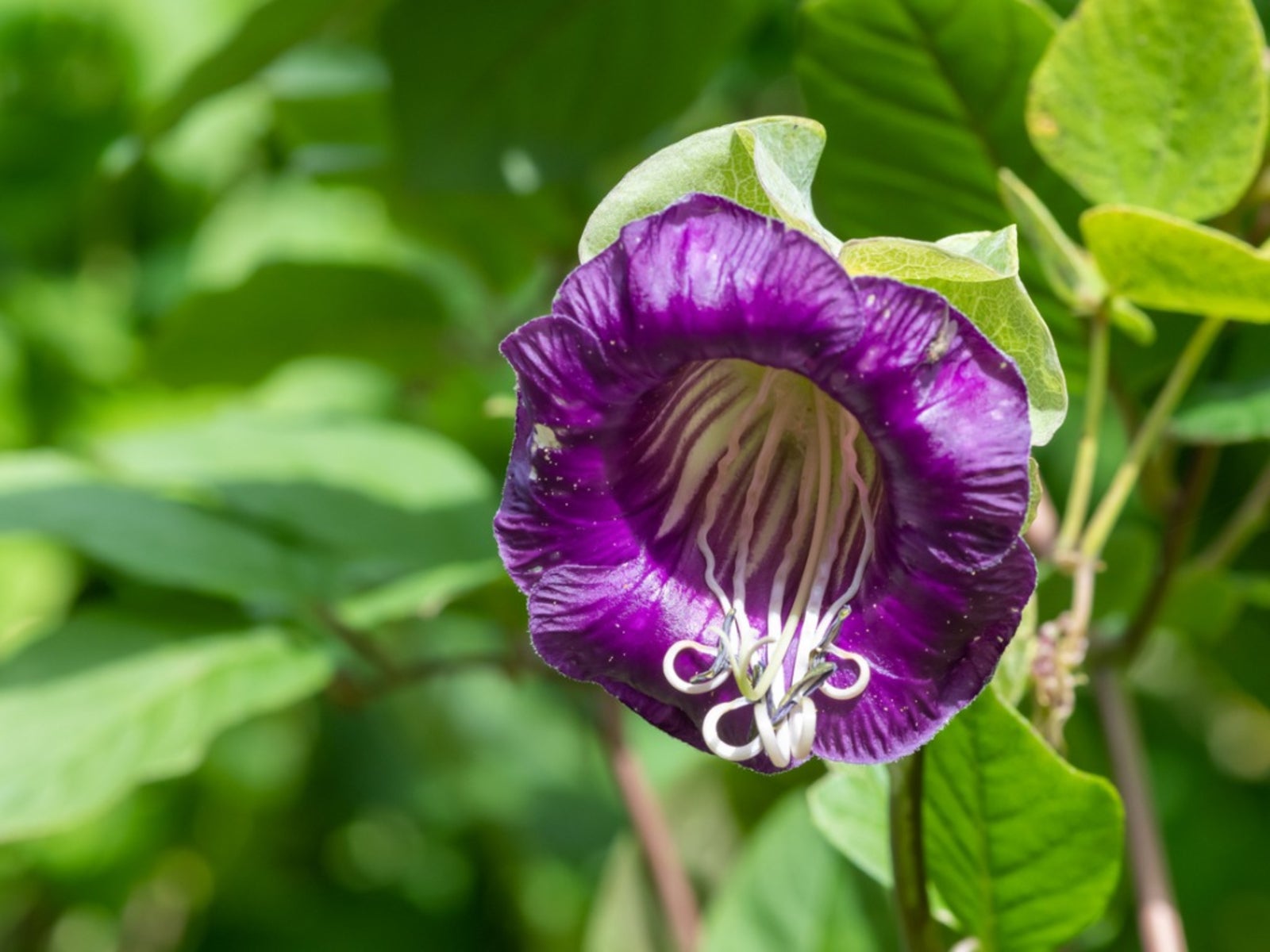Growing Cup And Saucer Vine - Information And Care Of Cup And Saucer Vine

Also known as cathedral bells because of its flower shape, cup and saucer vine plants are native to Mexico and Peru. Though it thrives in warm climates such as these, there is no need to discard this pretty climbing plant when the summer is done. Bring it indoors to your warm sunroom and enjoy it all year long. Keep reading for more information on cup and saucer vine plants.
Interesting Facts About Cup and Saucer Vines
The cup and saucer vine was first discovered by a Jesuit missionary priest named Father Cobo. The plant's Latin name Cobea scandens was chosen in honor of Father Cobo. This interesting tropical beauty grows vertically rather than laterally and will eagerly cling to a trellis and create a lovely display in a very short amount of time. Most vines reach a mature spread of 20 feet (6 m.). The interesting cup or bell-shaped flowers are pale green and as they open in midsummer, they turn to white or purple and persist through early fall. Although the buds have a somewhat sour aroma, the actual flower is sweet like honey when it opens.
Growing Cup And Saucer Vines
Starting cup and saucer vine seeds is not difficult, but it's best to scratch them a bit with a nail file or soak them overnight in water before you plant them to encourage germination. Sow the seeds on their edge in seed trays filled with soil-based seed compost. Be sure to put just a sprinkle of soil on top of the seeds, as too much will cause the seed to rot. The temperature should be around 65 degrees F. (18 C.) for best results. Cover the seed tray with a piece of glass or plastic wrap and keep the soil moist but not saturated. Germination usually occurs a month after seeds are planted. When the seedlings have grown enough to be transplanted, move them to a 3-inch (7.5 cm.) garden pot that is filled with high-quality potting soil. Move the plant to an 8-inch (20.5 cm.) pot as the plant gets larger.
Care of Cup and Saucer Vine
Be sure that it is warm enough for your cup and saucer vine plant before you place it outdoors. Craft a trellis for the plant to climb on by angling two bamboo stakes and stretching some wire between them. Begin training the vine to the trellis when it is small. When you pinch the tip of the vine, cup and saucer vine will grow lateral shoots. During the growing season, provide plenty of water but allow the soil to dry out before you water. Water only sparingly over the winter months. Feed your cup and saucer vine with a tomato-based fertilizer once every two weeks when the buds appear. You can also provide a light layer of compost halfway through the growing season. Stop feeding by mid-fall or earlier, depending on your climate. Cup and saucer vines are sometimes bothered by aphids. Spray with a light misting of insecticidal soap or neem oil if you notice them. This generally does a good job of controlling these little pests. Bring your vine indoors when temperatures dip below 50 degrees F. (10 C.) at night.
Sign up for the Gardening Know How newsletter today and receive a free copy of our e-book "How to Grow Delicious Tomatoes".